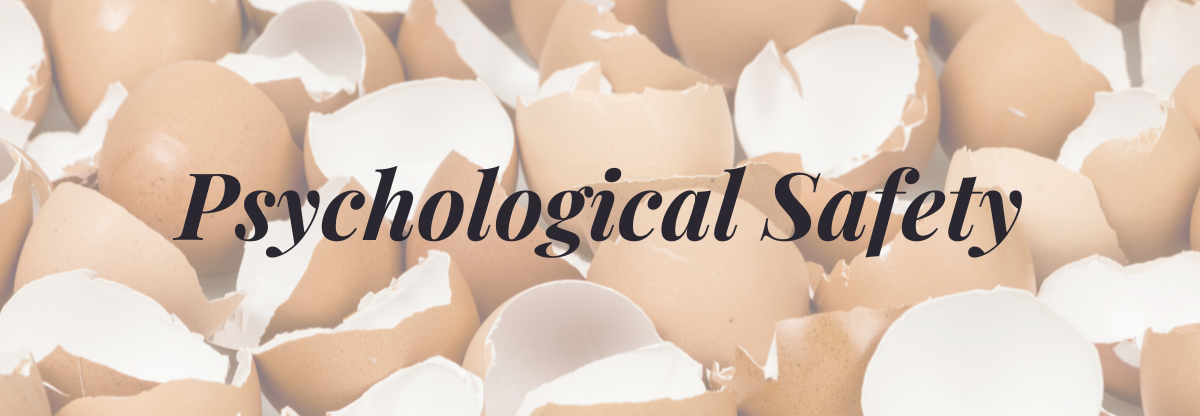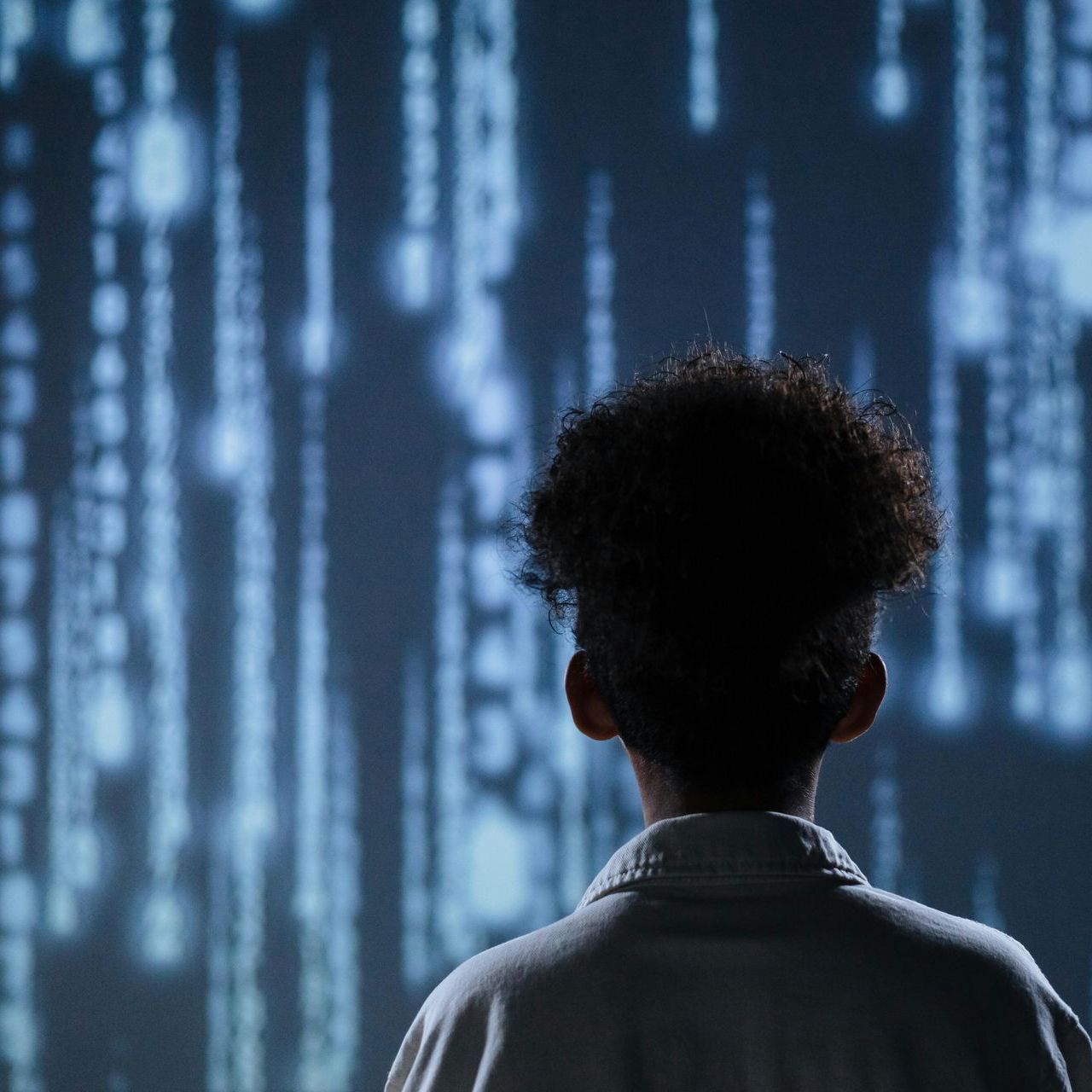How To Create Psychological Safety
The opposite of psychological safety is walking on eggshells.

The most consistent feedback I receive from my group coaching activities is that I’m able to create a psychologically safe environment.
Psychological safety has become something of a Holy Grail in team performance and group dynamics since the research emerged from Google’s Project Aristotle. While not the only critical factor, it’s the biggie.
I thought it might be helpful to share my ethos, which helps people relax their shoulders within minutes of walking into my consulting room or workshop space.
It’s not anything I say; it’s a communication that I demonstrate through my actions and reactions.
We have all had the experience of wincing with discomfort as facilitators try to encourage their audience to be engaged and open by adopting the persona of an authoritarian schoolteacher and simply telling them to be engaged and open.
When working with grown-ups, telling doesn’t work. We must ask, show and invite.
Some facilitators take the same approach to psychological safety, announcing, "This is a psychologically safe space," as if stating it out loud makes it so. But safety isn’t explicit, it’s implicit. It’s not a bullet point on a flipchart; it’s a feeling.
It’s the micro-interactions, the tone, the body language, the vibe. And that vibe either tells your nervous system you’re safe to contribute freely or warns you to tread carefully.
If someone attempts to create psychological safety by imposing it as a rule, they have spectacularly missed the point.
Many people think psychological safety means a space where they are not triggered or offended, but being triggered or offended is what makes psychological safety impossible.
We all need to let go of our knee-jerk reactions if we want to foster an environment of open communication and collaboration, both for ourselves and for others.
The opposite of psychological safety isn’t conflict, it’s walking on eggshells.
Healthy disagreement requires safety. You can only push, challenge, or be provocative in a helpful way when the relationship is robust enough to hold it.
What Safety Actually Looks Like
To create a truly safe space, you must provide a genuinely non-judgemental experience.
That doesn't mean making judgments unconsciously and then consciously pretending not to judge, to retain composure and meet a specified professional competency.
It means not judging in the first place.
It requires a curious, flexible philosophy that remains inclusive and explores ideas without disrupting the feeling of connection and relationship.
People may be left, right, woke, anti-woke, eco-conscious, fiscally conservative, pro-Trump, anti-Trump, or some other opinion-splitting agenda. None of these people is a total idiot. None are completely right.
Psychological safety means staying connected regardless of differences. The cohesive group dynamic must be more important than individual opinions about the issue at hand.
Despite increasing attention to safety, we are moving further away from it with strange inclusion dynamics (thirty people on a video call with screens off), less informal, interpersonal interactions (water cooler moments), and more polarised opinions (reinforced by our online echo chambers).
There is a way back to safety under these conditions, but to achieve it, we need to remember some foundational ideas from philosophy and social psychology that we seem to have recently forgotten.
Please indulge me in my attempts to reintroduce some of the old ideas that are vital for our future…
We All Live In Different Worlds
If you study Epistemology, the study of how we know what we think we know, you quickly realise that each of us lives in our own world, a complex mental model based on our personal experiences. As Alfred Korzybski famously put it, "The map is not the territory."
Your brain doesn’t process the world directly. It constructs a working model of the world by filtering a limited amount of data through a vast network of neurological transforms and psychological schemas.
So when someone has a wildly different perspective, they are drawing conclusions from a completely different experience. Dissonance arises when your internal map of the world doesn’t match theirs.
When we clash, it’s not reality we’re fighting over. It’s our competing interpretations of reality.
Meaning-Making is Idiosyncratic and Context Dependent
Philosophers have long wrestled with the process of meaning-making. Wittgenstein's "private language argument" and the "problem of other minds" both point to the same conclusion: We can never truly know someone else's experience, so we cannot know what they are thinking of when they use a particular word.
Take the word ‘integrity’ as an example. What does that mean? Remaining composed? Telling the truth? Doing the right thing? Not compromising your values? Being discreet? Being professional? ETC… Words are extremely unreliable. That’s why two people can discuss something and walk away with utterly different interpretations.
If you think that someone is saying something terrible, it’s worth checking. You may just be tripping over the words used. Psychological safety means creating space for diverse interpretations and nuance.
Words are inaccurate and can have completely different meanings in different contexts. Understanding is always co-created, never simply exchanged.
Fundamental Attribution Error (FAE)
The Fundamental Attribution Error is our tendency to attribute other people’s actions to their character while explaining our own actions by the circumstances.
If someone cuts us off in traffic, we call them a name, and don’t consider that they could be on their way to a hospital, but if we drive badly, well, it wasn’t clearly signposted, the road layout was confusing, and the sat nav did not give us enough notice.
We observe a snippet of behaviour, make judgements, and then turn those judgements into permanent character traits. For example, when someone challenges an idea in a meeting, we might label them as difficult or confrontational, when we could see the behaviour as curious or concerned, or better still, we could refrain from labelling it with an attitude.
There have been studies that show people make character judgements about writers based on their content, even when they know the writer is not writing from their own beliefs. It’s why people in supermarkets are horrible to actors who play villains on TV. We have trouble separating the messenger from the message.
Our attributional errors from snap judgements sabotage psychological safety.
The antidote to FAE is curiosity. What might be going on in their world that I can’t see? What circumstances could be influencing them? The moment we start to ask those questions, we open the door to more flexible meaning-making and safer conditions.
In-Group / Out-Group Dynamics
Human beings are tribal creatures. Evolutionarily, it made sense. Safety came from belonging. So we instinctively sort the world into "us" and “them." But this wiring, once helpful for survival, now fuels division.
The Robbers Cave Experiment in the 1950s showed just how quickly group identity forms and how easily it turns to hostility. Two groups of boys at summer camp, given separate identities, quickly turned competitive, distrustful and then horrifically aggressive.
Even more alarming was Jane Elliott’s "Blue Eyes/Brown Eyes" classroom experiment, which exposed children to arbitrary discrimination based on eye colour. The effects were immediate and disturbing.
In professional environments, in-group/out-group dynamics show up subtly but powerfully: silos, cliques, leadership vs. staff, remote vs. office-based, the cool team vs. the boring one, and any identity politics.
For psychological safety we must dissolve these boundaries. In well-connected environments, they are not relevant (even if they are relevant in broader contexts).
Expectation Becomes Reality
In the famous “Pygmalion in the Classroom” study, psychologists Rosenthal and Jacobson told teachers that a random group of students were about to show a spurt in intellectual growth. Those students weren’t chosen based on any assessment of ability; they were picked out of a hat.
But months later, those kids outperformed their peers! Why? Because the teachers believed in them. And without realising it, they gave them more attention, more encouragement, more feedback. The students internalised those subtle cues. The teacher’s expectations became a self-fulfilling prophecy.
‘Expectancy bias’, which is the tendency for our beliefs about someone to subtly influence their behaviour, happens everywhere. In boardrooms. In performance reviews. In day-to-day conversations. We don’t just observe what happens objectively; we see it subjectively. Our ‘confirmation bias’ ensures that we see everything that reinforces our expectations and miss everything that contradicts them, and ‘belief bias’ is a mental shortcut that favours conclusions that fit our existing beliefs.
We project our expectations, confirm our beliefs and reinforce our assumptions; and then we marvel at how accurate our predictions turn out to be. I knew it!
For better outcomes, you need to be less certain about what will happen in advance. Check the lens through which you’re looking: What are you expecting? What do you believe to be true? And how are those internal stories shaping what you experience?
Leave the door open for happy accidents and surprises.
A Mindset for Safety
To conclude, here’s a practical mindset for creating psychological safety rooted in human psychology.
To embody this non-judgemental behaviour, question these mindsets until you are satisfied that they are more accurate (or less wrong) than clearer mindsets with certainties and inflexibilities.
- Abandon any clear expectations in favour of a curious mindset. Cluelessly wonder what will happen…
- Assume misunderstanding rather than anything negative. Nobody is trying to ruin their day.
- Respect that others see the world differently. They’re not wrong. Just different.
- Relinquish control. You can’t control others’ opinions, and you don’t have to react to them. Welcome all contributions, regardless of whether you agree or not.
- Explore meaning to co-create narrative. Words don’t convey precise meanings, so don’t react to words on face value.
- Chill out, real-world relationships matter more than memes, echo chambers or headlines. Confront issues, but never confront people. It needn’t be personal.
- Remember, we’re in this together, whatever your camp. Together is the only way positive change happens.
References
- Churchland, P. M. (1989). A Neurocomputational Perspective: The Nature of Mind and the Structure of Science. MIT Press. (On the ‘problem of other minds’).
- Elliott, J. (1970). A Class Divided: Then and Now. Frontline (PBS Documentary on the Blue Eyes/Brown Eyes experiment).
- Google (2016). Project Aristotle: Understanding team effectiveness.
- Korzybski, A. (1933). Science and Sanity: An Introduction to Non-Aristotelian Systems and General Semantics. Institute of General Semantics.
- Churchland, P. M. (1989). A Neurocomputational Perspective: The Nature of Mind and the Structure of Science. MIT Press. (On the ‘problem of other minds’).
- Rosenthal, R., & Jacobson, L. (1968). Pygmalion in the Classroom: Teacher Expectation and Pupils’ Intellectual Development. Holt, Rinehart & Winston. (The original study demonstrating how teacher expectations can significantly influence student IQ and performance).
- Ross, L., Amabile, T. M., & Steinmetz, J. L. (1977). Social roles, social control, and biases in social-perception processes. Journal of Personality and Social Psychology, 35(7), 485–494. (On Fundamental Attribution Error)
- Sherif, M. et al. (1961). Intergroup Conflict and Cooperation: The Robbers Cave Experiment. University Book Exchange.
- Wittgenstein, L. (1953). Philosophical Investigations. Blackwell Publishing.










